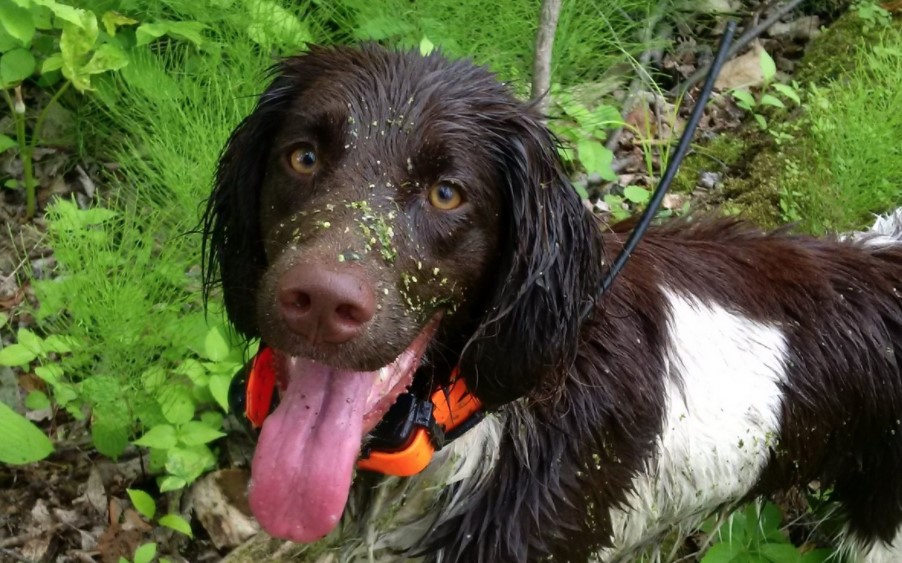For active families who like to be outdoors and are looking for a spirited companion, the Small Munsterlander is a reliable companion. If he was properly raised to do so. Find out everything about the Small Munsterlander dog breed here.
Small Munsterlanders are among the most popular pedigree dogs among dog lovers. Here you will find the most important information about the Small Munsterlander.
Size: male 52-56 cm, female 50-54 cm
Weight: 17-25kg
Coat length: long
Coat Colors: Brown and white or brown roan with brown patches or spots or brown coat
country of origin: Germany
Origin of the Small Munsterlander

It is said that there were long-haired guard dogs in the Münsterland around 1870. They were popular hunting companions and excellent tracking dogs. The heath poet Hermann Löns and his family are said to have been the first to breed these dogs. It was not until 1921 that a breed standard was created, which is still used today for breeding.
The appearance of the Small Munsterlander
The Small Munsterlander is a medium-sized dog. With an average of 52 to 54 cm, it is significantly smaller than the Large Munsterlander. The breed is characterized by a strong physique with balanced proportions. The tail is carried flat and shows a long flag.
Coat and colors of the Small Munsterlander
The long-haired Small Munsterlander, averaging 52 to 54 cm in size, comes in two – to be precise, in three – color combinations: brown and white, brown and gray and very rarely with tan markings on the muzzle and eyes, which is called Jungklaus’s markings. The fur is long and weatherproof, yet easy to care for. Brushing the coat once or twice a week is enough.
Temperament and upbringing of the Small Munsterlander
If you keep the Small Munsterlander according to its natural disposition, its wonderful nature can fully develop: The friendly pointing dog is considered affectionate, reliable, lively and cheerful. When dealing with children, he is usually social and extremely agreeable. It is easy to keep with other pets.
Trained consistently, the Small Munsterlander develops into an easy-to-handle and obedient dog. However, he likes to dance on the nose of an inconsistent owner.
If you want to leave your Small Munsterlander without hunting training, you have to offer him plenty of alternative employment. This dog wants to be encouraged and challenged. In addition to swimming, he can be well utilized with nose work (mantrailing, search games, tracking). As an original workhorse, he simply needs more than the daily walk. With the (consistent) education in the first years of life, the most important thing is to steer the passion for hunting in the right direction.
Like all working dogs, the Small Munsterlander learns quickly and happily, but demands consistency. He immediately exploits mistakes in his upbringing and pursues his own passion.
Keeping and caring for the small Munsterlander

Although the Small Munsterlander is increasingly taking on the status of a family and companion dog, it is a passionate hunting dog whose specific skills should by no means be neglected.
The Münsterläner develops a strong bond with the family, but is not a watchdog or protection dog. His outstanding abilities are: a firm pointing, an enormous sense of security and good retrieval.
The topic of water work is at least as exciting as retrieval or breeding shows. On and in the water, the Small Munsterlander comes out uninhibited when it comes to water fun, endurance and nose performance. Swimming is the first stage of gundog training and is also a good pastime for Munsterlanders. The earlier you start swimming training, the easier it will be for the dog. A flat bank is important at the beginning so that the puppy or future young dog gradually gets used to the water. As long as the water is only up to their belly, most young Munsterlanders are quite brave. Especially when adult role models are involved. However, as soon as the ground disappears from under the paws, things look different. Then a playfully used stimulation rod can help.